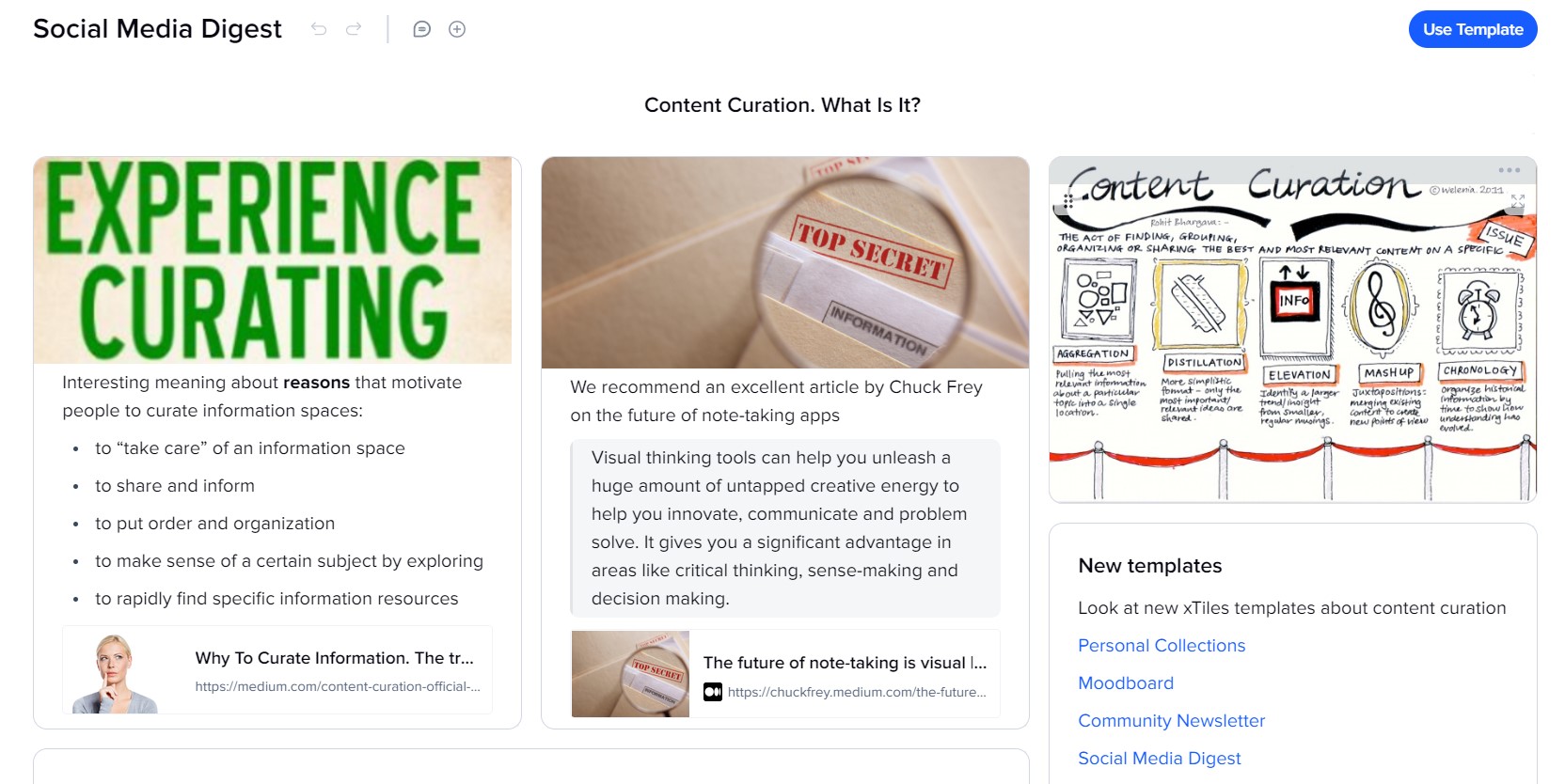Thesis
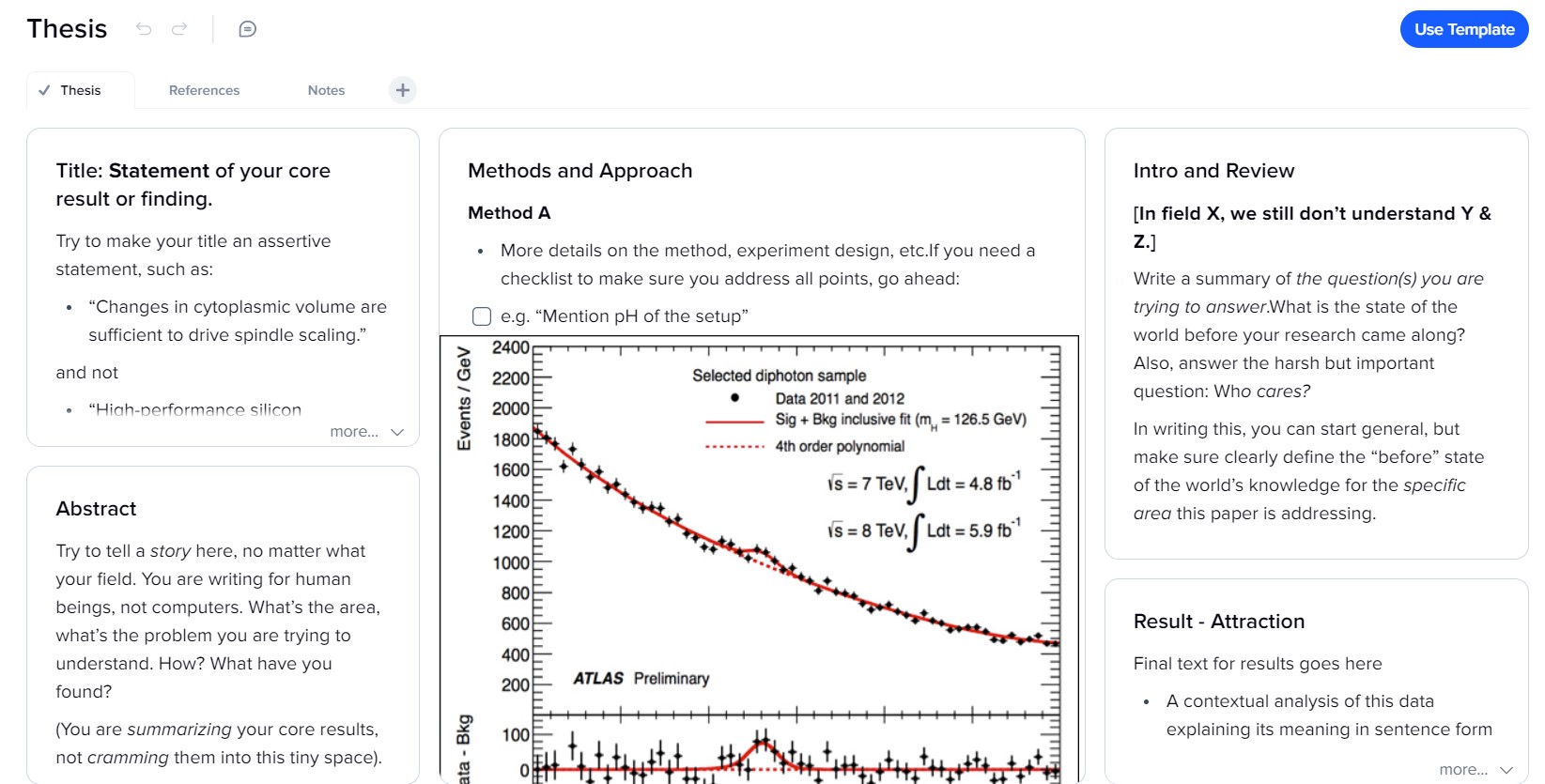

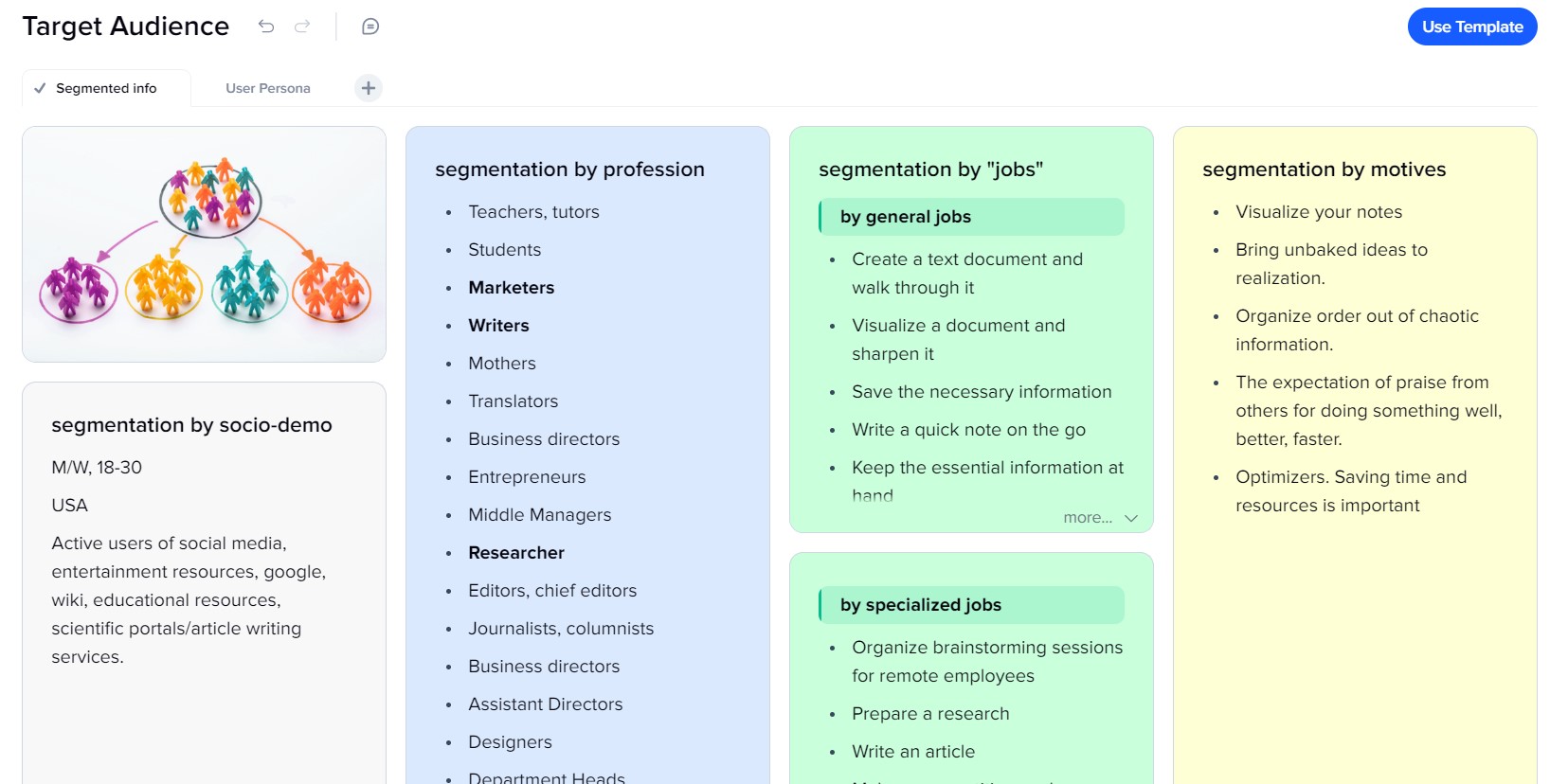
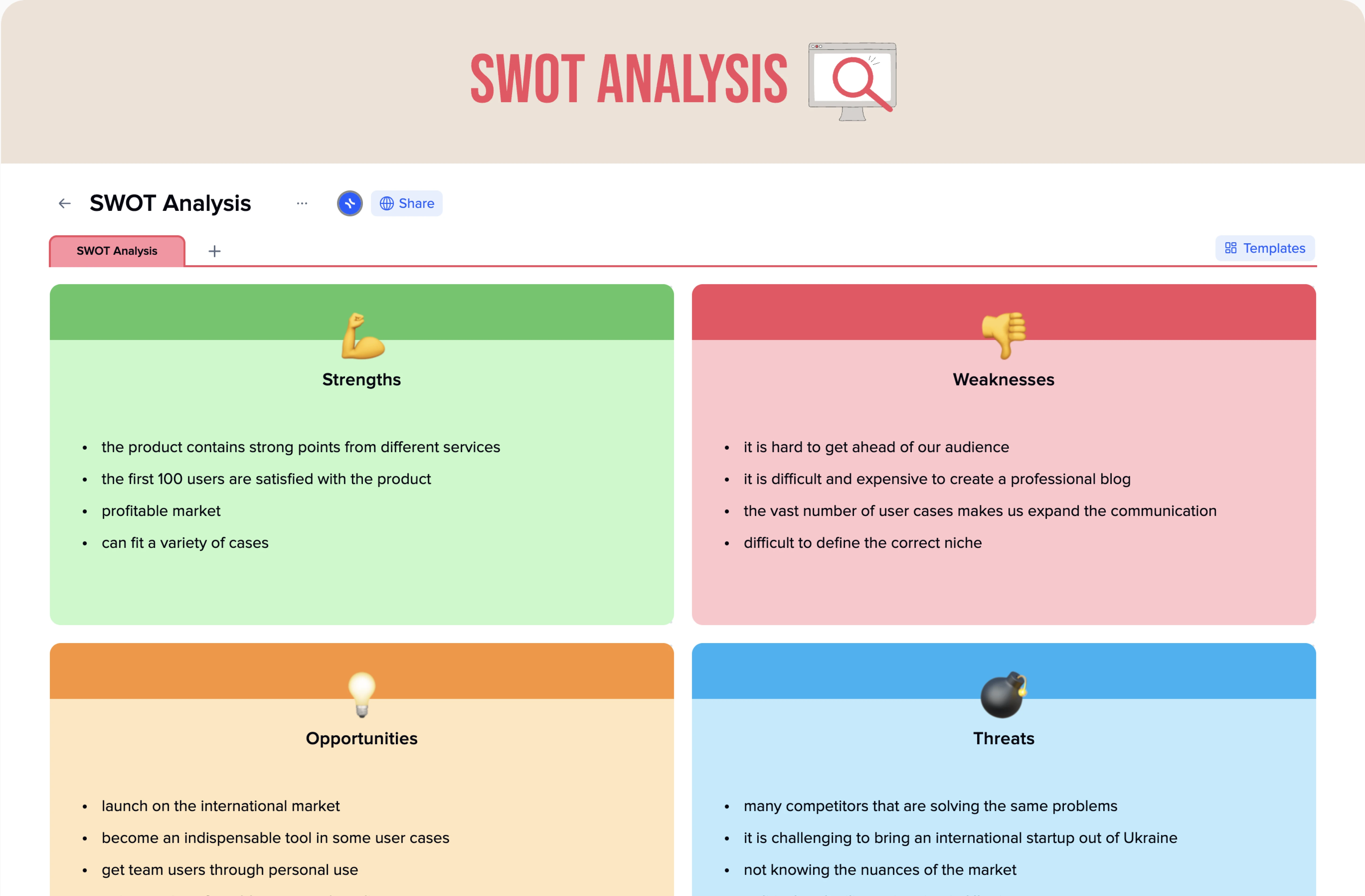
What would be your first step when starting something new? Plan of action? Rushing into action immediately while the impulse is still strong? Your future success hugely depends on those first steps you take. They define how well and smoothly the whole process will go.
That’s why a comprehensive analysis of your idea is the best way to start a new project, college assignment, your own enterprise, etc.
SWOT Analysis is a simple yet powerful approach to evaluating your intent. The abbreviation stands for Strengths, Weaknesses, Opportunities, and Threats. These are key objectives to consider before you start implementing your ideas.
If your analysis is not just for your eyes, you may need a nice-looking and structured SWOT analysis template to save time playing with fonts, colors, forms, etc. A free SWOT analysis template, which xTiles offers you, is the simplest way to analyze your future project or company from the most important for its successful completion angles.
SWOT analysis is an evaluation model for different kinds of tasks. Many people mistakenly believe that SWOT is only for business needs, and if you’re not a CEO of a huge company, you have no right to use it.
In reality, this basic method can be applied to many kinds of tasks and projects as long as they have Strengths, Weaknesses, Opportunities, and Threats to contemplate.
The SWOT analysis definition speaks for itself. It helps you define and describe four factors that may affect your project at any stage. It is so good because it concentrates on internal and external factors, providing a 360-degree view.
However, there are disadvantages to this model too. While helping you find out where you stand, the SWOT matrix won’t help you come up with a plan of action. That’s why you will need to combine different approaches for a successful outcome.
So, if you decide to make SWOT the first stage of your project, it should be followed by thorough planning. Many business owners prefer to implement SWOT also to check whether their action plan has no breaches and will lead the company or team exactly where it should be.
Any business is about taking risks. And if you can prepare your plan for development and growth, you can not always prepare yourself for all the external threats and dangers that might come. SWOT Analysis helps you define what might become a problem in the future and what is a problem right now but hides behind other matters.
As we already said, you can use SWOT analyses for a wide variety of cases, and it will bring your positive results. However, you need to understand your objectives before you start analyzing. What is your initial goal?
Let’s take a look at some of the most common SWOT analysis examples.
Suppose you’re a recruiter who deals with many people daily. In that case, a SWOT matrix may become your best tool for making decisions or providing people who make decisions about hiring with all the needed information.
It will be especially useful for cases when you have many candidates for one important position.
Also, HRs may use SWOT analysis to be aligned with employees’ growth goals, hardships, and benefits. The tool will help you clearly understand who is who and what to expect from your colleagues.
Even the best product or brand has competitors. Probably, otherwise, development and growth would be impossible, and customers and consumers wouldn’t be the most important people in the world. However, striving to beat your competitors and win the audience is a feature of a business that wants to be successful.
SWOT Analysis will help you find out what may be the reason your potential customers still choose your competitors’ products over yours. It will help you to look at your and your competitors’ product from different angles and come up with the idea or ideas on how to change the ratio in your favor.
Occasionally, everyone gets stuck with their tasks or projects, especially when they work on something similar for a long time. Eventually, goals lose their precise borders, and you can’t understand what exactly you need to do, and so on.
SWOT Analysis will help you to rebuild your connection with what you or your team are doing. Or it will help you build entirely new relationships with your company or product.
That is one of the most popular cases when SWOT analysis becomes a central part of strategic planning and making decisions. It helps to find a project’s or product’s strong points that can be presented to potential customers or investors. Also, it will help define what needs to be changed to grow and develop.
A finished product usually differs from the initial idea. It came through many changes and many people with different visions, so no wonder it has evolved. Many marketers use SWOT to track those changes and how they affect the company’s goals.
Breaking big tasks into smaller ones is one of the most important principles for effectively delivering a finished product. However, when many people are involved, it may be hard to keep track of whether everyone is aligned with the initial idea and with others.
SWOT Analysis will help keep everyone together even if everyone works on something different. Connection and collaboration within the project with many elements and participants are crucial for its success.
Project managers or department managers use SWOT models to ensure every team is effective and works toward the same result.
We’ve already spoilered you with what SWOT stands for. Also, please note that the first two sections, i.e., Strengths and Weaknesses are the internal factors that you have, or at least must have, control over, while the external ones (Opportunities and Threats) aren’t in your power and come from outside, so the only things you can do about them are defining them, analyzing them, and being wary of them.
Now, let’s check in detail every element of this simple yet polished diagram.
That would be the part where you mention your strong points. What do you do particularly well? What are you proud of? What do others keep praising you for?
However, if you analyze your project and not your personal features, you need to put the project at the center of your questions. What advantages can your project offer to others? Why will it be useful for others? What will they find great about it?
For many, the part where you have to speak about your advantages and why you or your idea is fantastic is the hardest. In a world full of anxiety and low self-esteem, it’s super easy to fill the part of the diagram devoted to Weakness rather than come up with a few comprehensive advantages to convince yourself, your stakeholders, or your college professor that your idea deserves to live and be implemented.
We kindly ask you to give yourself some time while gathering the data for this part of your SWOT analysis. You may go and ask others’ opinions to get a better understanding of what you’re about to do. Sometimes, their judgments might be negative and better suitable for the next section. However, they may be what you yourself couldn’t see.
Now, you need to identify what needs improvement. These factors aren’t threats yet, but without you doing something/changing something, they might become dangerous.
Think about what is the hardest for you to achieve. Think of obstacles that prevented you from the desired outcome. Sometimes new and raw ideas seem perfect, with no hardships at all. If this is your case, give yourself some extra time for consideration.
You may check your strong points from the previous part and try to find their opposites. Still nothing? Well, maybe, indeed, you have come up with something magnificent. However, you may ask for other opinions once more. Other people are quick to come up with sour judgments, but that’s what we need (if they were fair) to move to the next part.
That part is where you can grow and develop. What has been there for ages, but you haven’t paid enough attention to it? What things/actions you neglected for different reasons can benefit your company or project?
If your project only starts, that diagram part will help you define where it may go. The longer your project exists, the harder it will be to find new opportunities. However, they may appear suddenly after some abrupt changes in society. For example, the CoronaVirus Pandemic significantly affected the world order we were used to, bringing many opportunities to many kinds of people and businesses.
That part will describe or at least count what you should be very well aware of to avoid losses. These obstacles may be only potential, which means they will not necessarily happen. However, preparing and discussing them now will take less of your resources than if you will need to resolve them on-site.
It is the last section, so sometimes people skip it because they are already tired or prefer not to think about a bad outcome. However, if you’re determined to get a clear and up-to-date SWOT analysis for your business or project, you must finish powerfully.
You may analyze your competitors, what threats they faced, and how they emerged clean from those difficult situations. Usually, others’ experience helps prevent similar difficulties or at least shows what to be aware of.
Now, you need to summarize your SWOT analysis with a well-defined action plan. Creating a strategy to move on according to what you’ve just found out is the natural continuation of your analysis. Otherwise, all your efforts and time will be wasted.
After you finish the xTiles SWOT Analysis Template, you may go on with other templates for strategic planning and management to create a great strategy for your business’s success. Check our Template Gallery to find what you need.
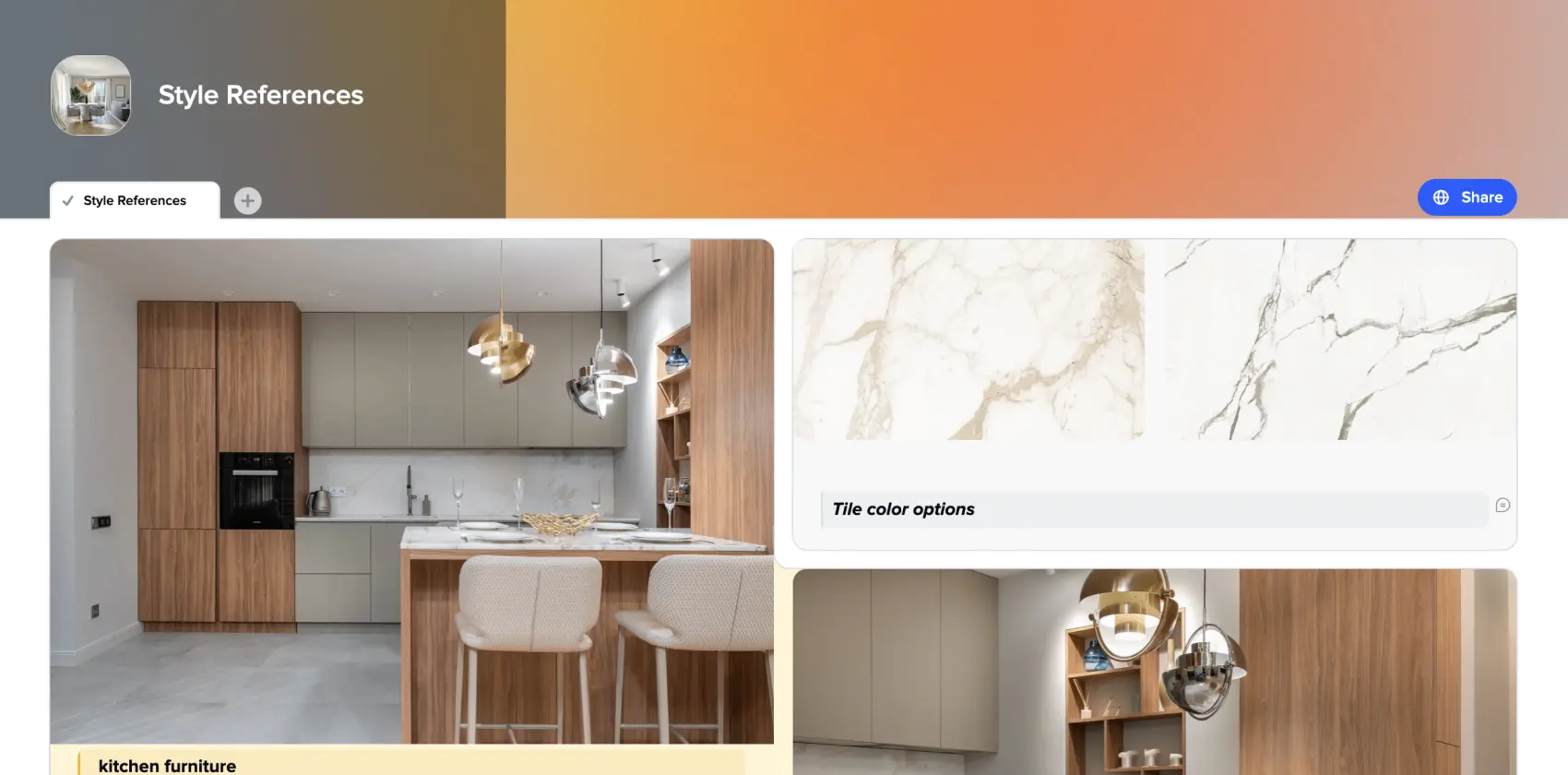
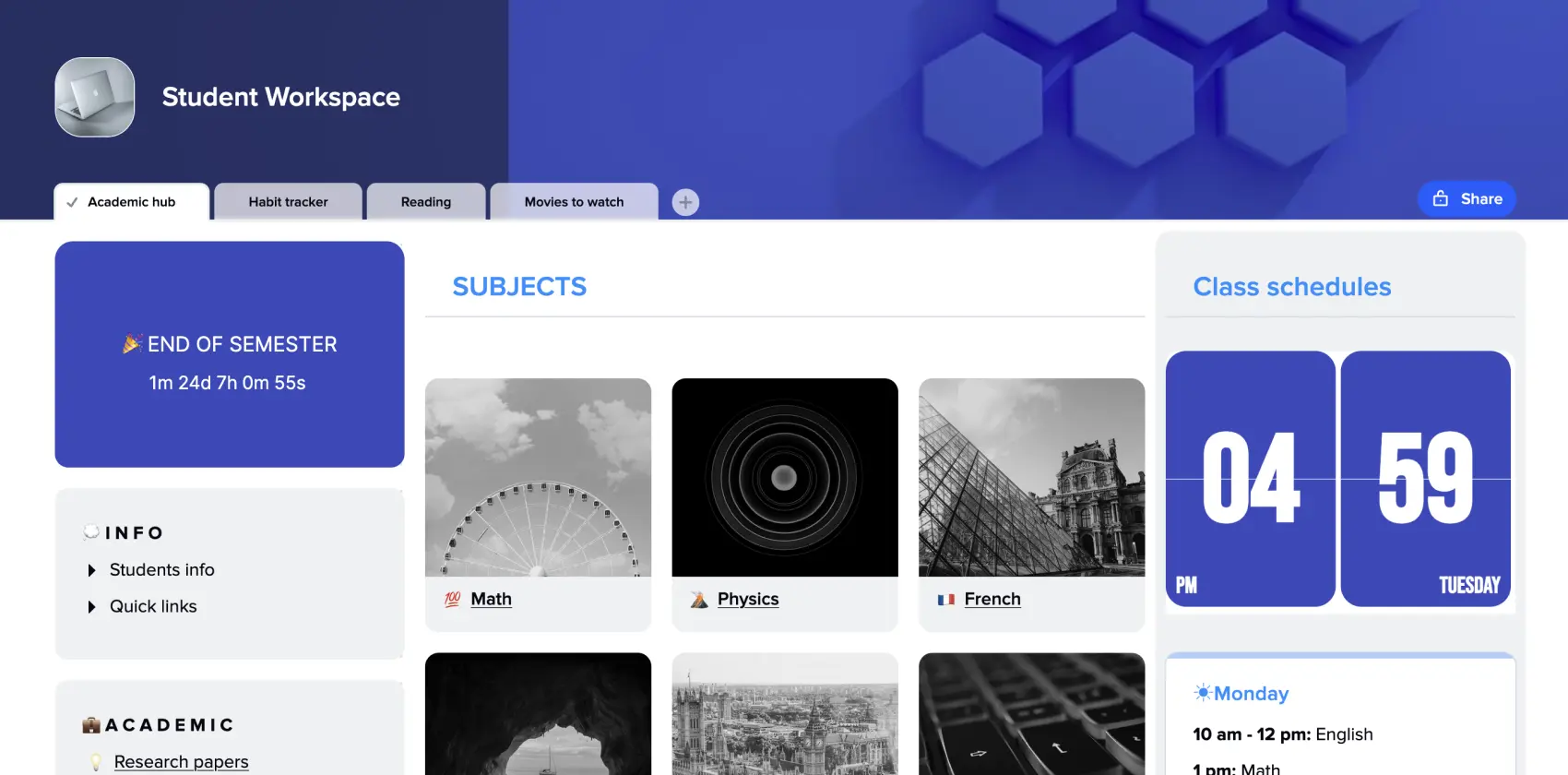
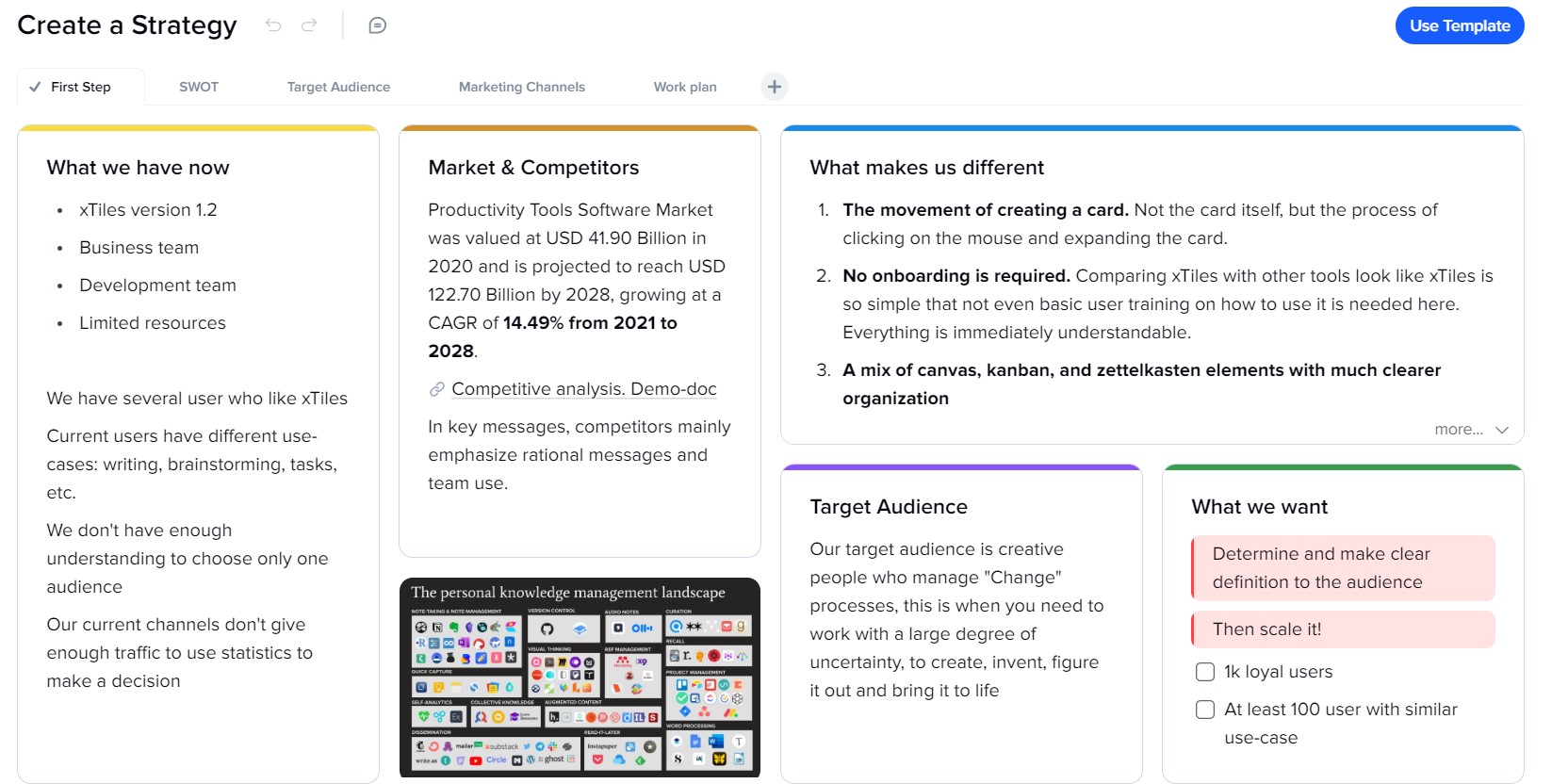
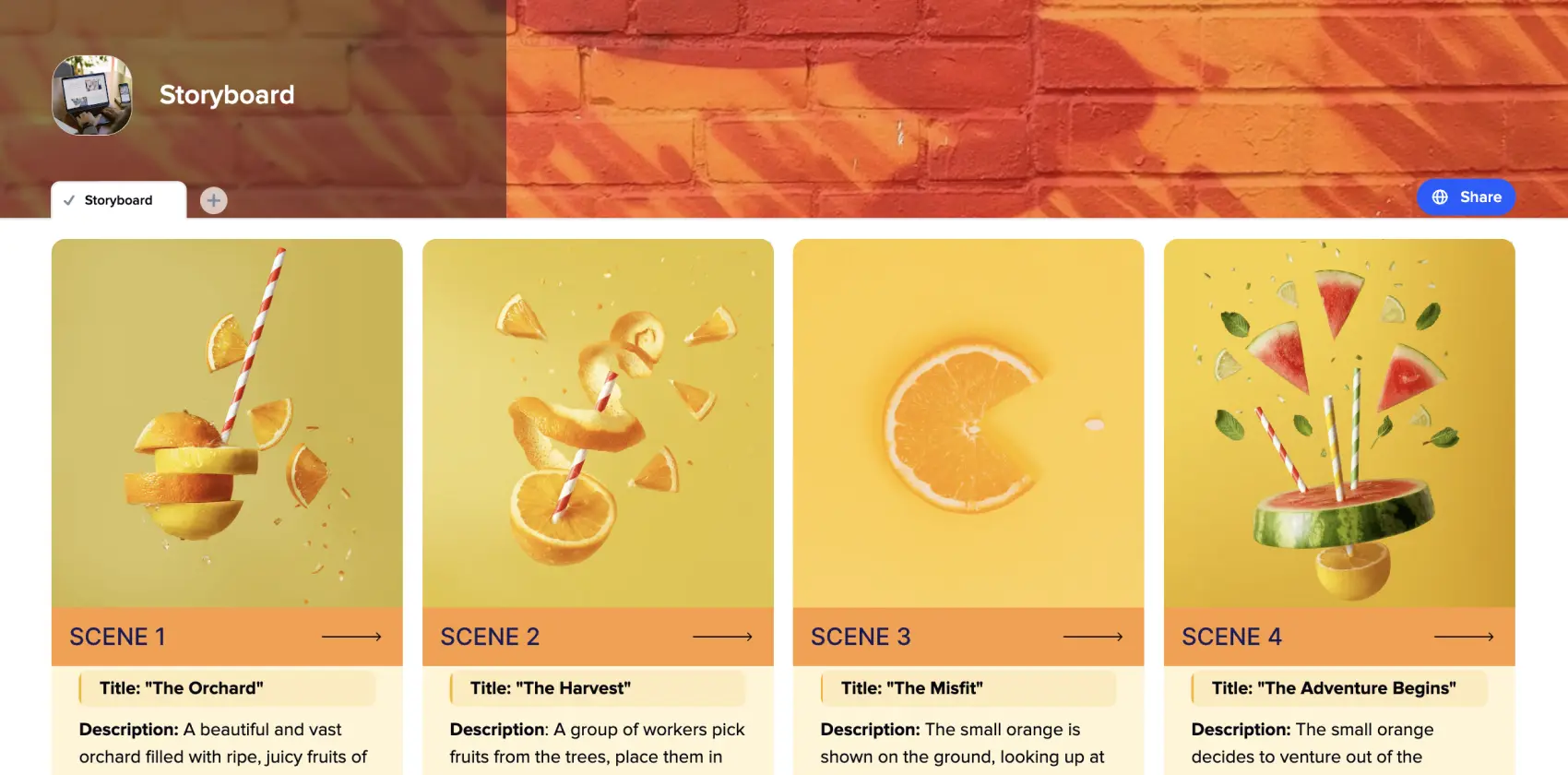
Where does a great story start? Undoubtedly, in someone’s mind. However, whether it ends up as a great video or movie includes many stages and one of them is storyboarding.
Creators need to explain themselves to the world, mainly stakeholders, and the team involved in order to get started. A storyboard also helps them to understand their intent better too because brainstorming and creation are never easy to understand, even for those who create.
Very often, the time from the moment the idea was born to the moment it needs to be presented is very short. In this case, a ready-to-use storyboard template will come in handy. Besides that, utilizing storyboard templates saves creators time they can devote to exploring characters, thinking about plots, developing unexpected situations, etc.
In other words, a storyboard template is a great way to ease the process that is hard and requires effort, creativity, talent, self-criticism, and millions of different skills.
The xTiles Storyboard Template may serve as a tool for quick and comprehensive sketching of your future videos. Additionally, we offer a quick guide on what a storyboard is, how to create one, and provide an example of a storyboard to show you what to expect in practice.
A storyboard definition may be already known to you from the name itself. It is a vital tool in the process of creating a video, serving as a graphic representation and roadmap for how the video will unfold, shot by shot. It provides a visual outline of the scenes, depicting each shot with illustrations or pictures, accompanied by notes describing the actions and dialogue taking place in the script during that particular shot. Essentially, a storyboard can be likened to a comic book version of your video script.
By utilizing a storyboard, you gain a comprehensive plan and direction for your video production. Similar to a script, it visually guides you throughout the entire process, enabling you to effectively plan and execute the necessary shots when filming commences. Early on, you can seek feedback from others and easily make adjustments to your storyboard, avoiding significant changes during the filming stage.
Creating a compelling storyboard doesn’t require advanced artistic skills, although they can certainly enhance visual representation. Storyboards can range from rough sketches resembling comic book panels to simple stick figures or even computer-generated drawings.
By familiarizing yourself with various storyboarding methods, you can choose the approach that best suits your needs.
Understanding the essential elements of every storyboard is crucial. These elements include capturing the key scenes, shot compositions, camera movements, character positions, and any important props or visual details necessary for conveying the desired message effectively.
Additionally, there are popular storyboarding methods that offer a systematic approach. Two such methods include:
No matter what is the budget of your project or how highly you’re skilled, a well-crafted storyboard will be your clear and organized roadmap to seamlessly guide you through the production process. It empowers creators to bring their unique vision to life and ensures that their video aligns with the intended message and storytelling goals.
In the process of video production, creating a storyboard may initially seem like an additional step, but its importance should not be underestimated. Here are three compelling reasons why incorporating a storyboard is crucial:
Communicating and conveying your vision for the video can often be challenging, especially when relying solely on verbal explanations or written documents like scripts.
Stakeholders and team members may struggle to visualize your ideas accurately. However, with a storyboard, you can present a visual representation that precisely maps out the sequence and appearance of your video.
By showcasing the visuals, compositions, and flow of the video through the storyboard, you provide a tangible reference that significantly improves others’ understanding of your creative concept.
Storyboarding serves as a blueprint for your video production, offering a comprehensive plan that encompasses all the necessary shots, their sequence, and the integration of visuals with the script. It acts as a starting point, guiding you in planning the coverage for each scene, including the different angles and perspectives to be captured.
This detailed roadmap greatly facilitates the production process by ensuring that no crucial scenes are overlooked and enabling you to piece together the footage according to your envisioned narrative.
Although creating a storyboard requires an initial investment of time, it ultimately saves time during the later stages of production. By having a visual representation of your video’s structure and key elements, you can effectively communicate your vision to your team, minimizing misunderstandings and the need for extensive revisions.
The storyboard streamlines the creation process by providing clarity and alignment, helping you stay focused on your original concept and reducing potential delays and iterations.
In summary, integrating a storyboard into your video production process enhances communication, streamlines production, and ultimately saves time. It enables you to effectively share your vision, facilitates planning and execution, and contributes to a smoother workflow, ensuring that your video aligns with your creative intentions while minimizing revisions and maximizing efficiency.
A storyboard template serves as a visual planning tool that aids in organizing and mapping out the key elements of a story, video, or animation. It typically consists of a series of boxes or frames that depict the sequence of events in the narrative, accompanied by space for written or visual notes to provide contextual details. By utilizing a storyboard template, you can streamline the creative process, making it easier to plan and visualize complex ideas effectively.
Storyboard templates hold significant importance as they contribute to the organization and structure of creative projects. They serve as a framework to plan and outline the visual progression of a story, ensuring that the desired message is conveyed coherently. These templates find applications in various domains, ranging from film and video production to marketing campaigns and educational initiatives.
Different video storyboard templates offer diverse approaches to presenting and organizing the narrative:
Using a storyboard template for video offers several benefits throughout the creative process. Firstly, it saves time by providing a clear visual representation of the story or project, aiding in the efficient communication of ideas among team members. It allows stakeholders to grasp the creative vision more easily and provide relevant feedback. Secondly, a storyboard template helps identify potential issues or areas for improvement at an early stage, enabling necessary adjustments to be made before significant resources are allocated. This proactive approach minimizes the risk of wasted efforts and enhances the overall quality of the final output.
The traditional approach involves sketching or drawing each frame on paper, arranging them in sequence to capture the flow of your video. This method allows for a hands-on, tactile experience, giving you the freedom to add annotations or notes alongside the images to provide additional context.
However, doing everything on paper might take a long time, and the process might get complicated if you need to edit some parts. The alternative – ready-to-use storyboard template and storyboard software and apps can be an efficient and much faster way to create a workable storyboard.
By providing creators with a ready structure where they can insert their data, a template shortens the time needed for storyboard creation, which means they have more time for creating the video itself. Also, when people are pressed for time and need to present their video intent urgently, such a template will come in handy as the shortest method for storyboarding.
Since we decided to use a template because many storyboard apps and software may require paid subscriptions, the first step of storyboarding – creating blank spaces is unnecessary. Everything is already done. Additionally, you can add more scenes or delete some if you need to, as the xTiles Storyboard Template is easily customizable.
When drafting your storyboard, it’s important not to worry about drawing skills because stick figures are enough in 9 out of 10 cases. Leave your skills and creativity to the actual video, yet don’t forget to add comprehensive accompanying text for each scene, which will help people visualize your intent more clearly and detailed. Context will eliminate the low level (if it’s low) of your drawings and in case you pour your heart into your sketches, it will help to create an even greater picture.
Also, it’s important to know that your drawings don’t have to be detailed or even in color. Even bad drawings, if they have a shared style, will present your intent. Your main task when sketching is to provide enough visual details so people who review your work can get the point.
Beneath each scene, you need to describe what is happening. Yes, that’s true. Your storyboard looks much like a comic book. That’s why it’s important to keep it simple, so anyone can understand and relate to what you’re trying to tell.
As you can see, employing a storyboard template enhances organization, facilitates communication, and promotes efficient planning and visualization of ideas. It optimizes the creative process by offering a tangible framework and serves as a valuable tool in identifying and addressing potential challenges during the early stages of a project.
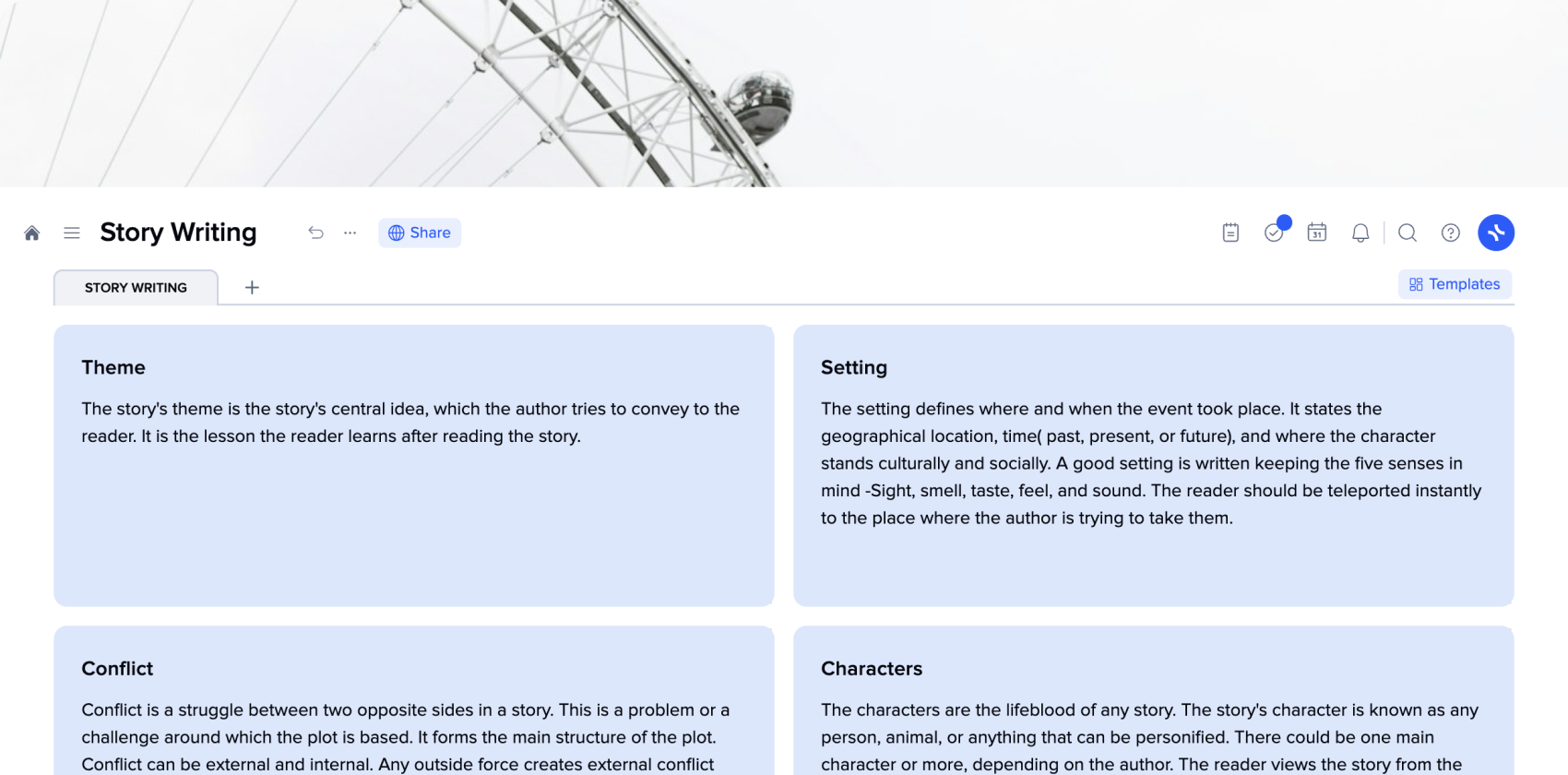
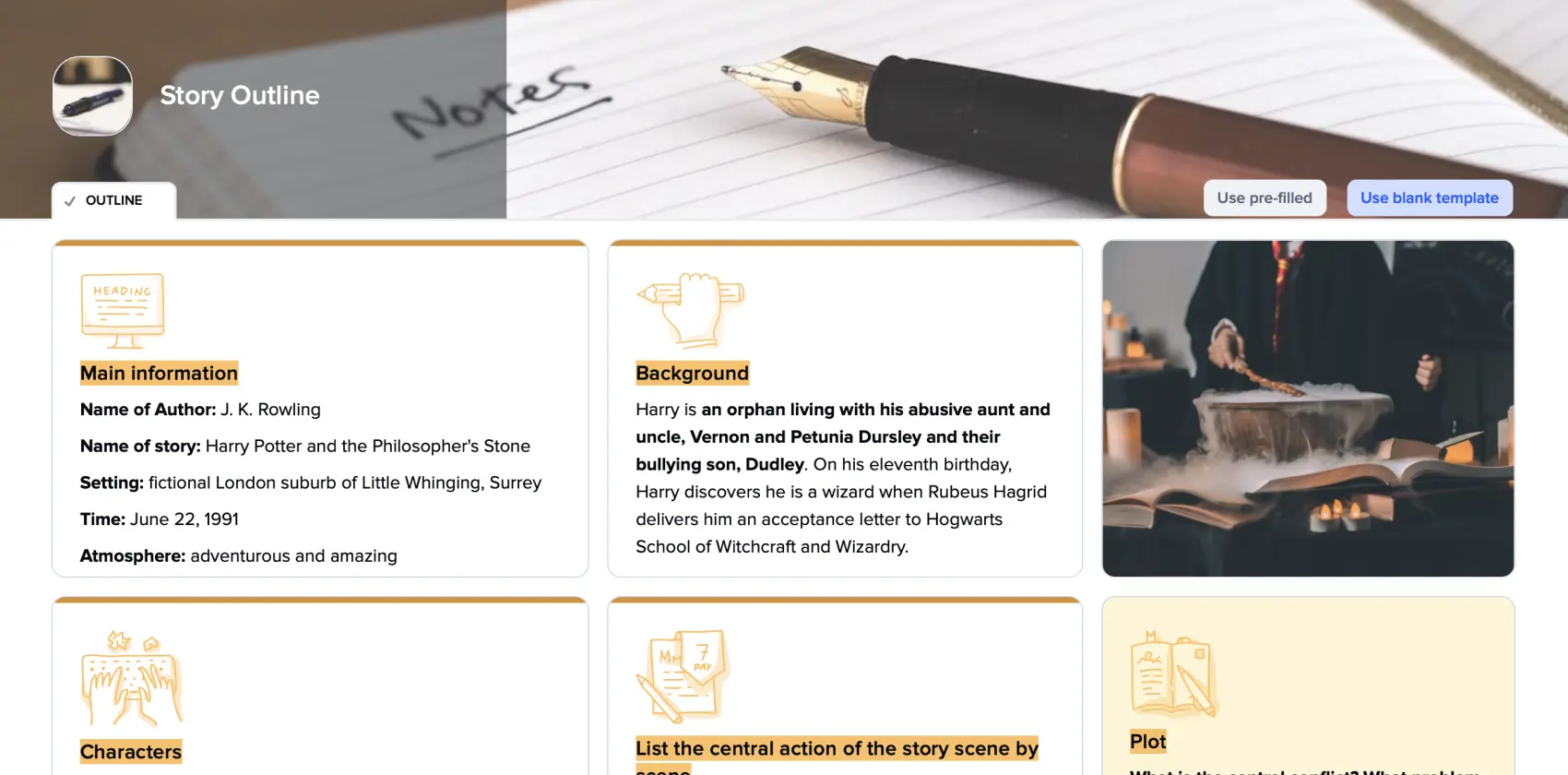
All great books were story outlines at one time. Between a raw idea that suddenly comes to your mind and a finished text lies many pages of attempts, editing, rewriting from scratch, and a bit of frustration. A story outline helps you overcome that path easier and faster, and a story outline template brings you clearance and understanding of where to move.
Some people may consider story outlines as obstacles to their creativity. That misconception is popular due to the wrong understanding of a story outline and when a writer needs it.
Spur of the moment splash of creativity can’t be stopped or devastated by a plan. No writer must strictly follow the plan if they feel their story no longer matches the first intent. A story outline is a map to help you get to the finish safely while enjoying your road. However, you can change your place of arrival anytime you want.
Did you know that “Frankenstein” by Mary Shelley was originally intended to be a ghost story, but it ended up becoming a science fiction masterpiece that explores the dangers of playing God?
Did you know that J. D. Salinger initially intended to write a novel about a prep school teacher, but as he wrote, the focus shifted to the rebellious and angsty Holden Caulfield and his experiences navigating adolescence?
In other words, a story outline is here not to stop your writing or put it into a frame but to encourage and support you.
The xTiles Story Outline Template will help you quickly come up with the main points of your story, provide you with a clear overview of your intent, and save you time on preparation and planning so that you can rush into action.
Also, we offer you a story outline example and a detailed guide on how to write a story outline to help you create your own that may become a great story someday.
A story outline is a basic plan for a future story. It’s a roadmap that outlines the major events and plot points that will take place in the story.
Sometimes authors add characters, settings, and key elements to the story outline document. That helps to see and analyze the future story clearly on misconceptions, mistakes, deadends, etc.
The outline can be as detailed or as simple as the writer desires. However, the more complicated the story is planned, the more detailed plan an author needs to keep all details harmonized.
No story outline or its negligence might lead to confusion and mistakes in texts. If there is an editor or proofreader, they may find them and fix them. However, even professionals sometimes miss mistakes, and texts get published with inconsistencies.
For example, in his “Heart of Darkness,” Joseph Conrad accidentally changes the age of one of his characters from 32 to 38 and back again. Jane Austine, in ” Pride and Prejudice,” makes the same kind of mistake. Mr. Bennet says that he has been married for 23 years, but later on, it is revealed that he has been married for 24 years.
A story outline won’t protect you from all possible mistakes, but it will definitely minimize the appearance of such inconsistencies in your texts.
A story outline structure depends on the story itself and on the author’s way of planning. Usually, there are next sections:
Not all stories can be put within that list. Literature has overcome a long path to ruin all the possible standards that might oppress people’s creativity. Hundreds of innovators spend years trying to show that there are no frames and cages to captivate real talent. It will find its way out via texts of bizarre and flamboyant forms.
That’s why the story outline method and story outline templates are just tools to coordinate your writing and keep you concentrated on your idea.
The safest option is to use a story outline for every fictional piece a writer is about to start writing. However, it may not be possible due to different reasons. For example, Ernest Shackleton wrote a book about his Antarctic expedition while stranded on an ice floe.
Some notable writers preferred or at least experimented occasionally with writing stories without a strict outline. Jack Kerouac famously wrote “On the Road” in a stream-of-consciousness style, without an outline or plan. Stephen King has said that he often begins writing a story with no clear plan or outline, letting the characters and plot develop as he goes.
Their experience may be alluring. However, skipping the planning and brainstorming stages is not always the best idea, especially when you’re new to writing.
If a novice writer wants to break stereotypes, they need to learn how to play by rules first, and outlining their stories before writing them will help to do it.
Traditional texts have their own rules and demand a certain structure. Usually, it’s a before-mentioned five-part structure with an introduction, rising action, climax, etc.
Unless you study literature, whether on your own or in college, you might not define those parts on your own. Without understanding how a text works, you might not build a story that will work for a reader.
Writing a story outline is important for a good beginning. Yet, you may do it at any stage of the writing process, depending on your individual approach, preferences, or current circumstances.
Additionally, when breaking the story down into manageable chunks, writers can more easily track progress and set goals for themselves. That may be particularly useful for long writing projects, such as novels or screenplays.
A story outline is a basic framework to make writing easier and more enjoyable without producing text with mistakes, inconsistencies, and holes.
A story outline template is the next step, making the process of writing an outline even more manageable. It will help you plan each part of your future story according to your initial idea and stick to it throughout the writing process.
Creating a document and taking care of its visual elements may be time-consuming. If there’s no option to organize everything as you like it, you may refuse the idea of using a story outline at all.
Also, poor customization functionality, like in the story outline template for Google Docs, might complicate the process of creating an outline.
xTiles offers an easily customizable story outline template that you can freely share with everyone on the internet and change whenever you want and need.
The ability to add and embed visual content allows you to create an outline representing your idea on different levels through different expressive means.
The xTiles Story Outline template may benefit writers in several ways:
Every story detail is important, whether you’re writing a short story outline or an epic novel outline. And every detail has to have its own place to work in your story as you intended. A story outline template will help authors avoid being drawn into details, descriptions, twists, and information about characters and settings.
A template is a basic framework to build upon a story. Having a predefined structure, a template ensures a writer doesn’t miss important details.
Your story may change dozens of times until you finish it. Sometimes a story is so consuming that authors become led by it.
By the way, plots about creators who become consumed by their works are pretty popular. You may find that in Stephen King’s “Secret Window, Secret Garden,” where the protagonist becomes consumed by his writing and descends into madness as he struggles to complete his latest work, or in Philip Roth’s “The Ghost Writer,” where the protagonist becomes consumed by the story of his subject.
A template helps to ensure that important elements, such as character traits and plot points, remain coherent and cohesive.
As you write, your creativity continues to produce new ideas and details that may be important for your story development. However, you can’t put everything because some may cancel others and vice versa. A template will help you from getting astray.
Also, it’s a great place to note all your ideas that can’t be used in the current story but may make the next one interesting.
If you finished your story, and there were no challenges, no hard decisions, or no holes, you probably need to check it once again, especially if you didn’t outline your story before starting.
A template will help you see potential problems with the plot, characters, arcs, and characters and address them before they become more difficult to fix later on in the writing process.
However, you need to understand that you can’t protect your story from inconsistencies fully. The larger your story will be, the more you might miss. J. R. R. Tolkien revised and rewrote large portions of “The Lord of the Rings” over many years to address issues with plot and characterization. Margaret Mitchell reportedly rewrote the ending of “Gone with the Wind” multiple times before settling on the final version.
Writing a story outline may be crucial for the writing process, as it helps writers to structure their stories and ensures that they will have clear and compelling narrative arcs.
Many authors don’t write a word of their next story without outlining it first. For example, J. K. Rowling is famous for her detailed outlines and planning processes in the Harry Potter series. She reportedly created extensive character profiles and plot outlines for each of the seven books before beginning to write.
Another famous author known for his well-planned plots and settings is George R. R. Martin. He creates extensive outlines and character profiles for his novels and has spoken about the challenges of balancing plot and character development throughout a long series.
Definitely, every author has their own style of writing and their own approach to planning writing. However, when you’re new to writing, you need to start with basic principles to build your own upon them.
The xTiles Story Outline Template allows you to create an outline to develop your story step-by-step. We also provide you with a guide and an example to make it easier. The sample is about Harry Potter and the Philosopher’s Stone, so there should be no problem understanding plot elements and how they work together.
Here are some general steps you may follow to write a story outline using our template:
Start with the name of your story. It may be just a working title that may change later. Try not to waste too much time creating a very eloquent name if there are no ideas. It may come to you naturally while working on the text.
Then shortly describe the settings. You may avoid details like landscapes. A geographical name may be enough to understand where the story takes place clearly.
Don’t forget about the time as it may be very important. 8 out of 10 times, inconsistencies we find in books concern timelines. Having it written down handy will help you keep in mind that you can’t deviate if it’s not a part of the story.
If your story takes place in a few different timelines, write down all of them. You may even add short descriptions to distinguish them better.
Finally, describe with a few adjectives the atmosphere of your story. It may change over the course of the action, so you may need to widen this part.
That step may require previous research to understand where and when everything is happening. That will be easier if you want to write a sci-fi or fantasy book because you can make out most of the attributes of the setting world.
If you want your invented world to relate to your readers, you may need to use some cultures or historical periods as a base. For example, J. R. R. Tolkien used Celtic and Scandinavian mythologies when creating his Middle-earth, steampunk uses a Victorian Epoque, etc.
Historic stories require thorough research because each detail is hugely important. When an author mixes up the age of their characters, it represents a lack of attention. However, when they mix up historical details, it may be considered disrespectful to readers.
Describe the most important point about them, how they look, and whether it has any effect on how they behave and how other people look at them. Think about whether they have some fears, what kind of music they like, what are their guilty pleasures, their first memory, etc.
Become friends with them or enemies. You need to feel something about your characters. This way, you will ensure your readers will consider them real people and not empty and flat profiles with no motivation and background.
Sometimes great characters become very significant parts of the culture. Think about Don Juan, Romeo & Juliet, Macbeth, Faust, etc. So, developing your characters is never a waste of time. After all, some tiny detail about them may become a game-changer in the whole story.
Many writers concentrate on the first sentence or paragraph of their text too much, thinking that there’s no other chance to catch readers’ attention than to amuse or shock them from the beginning.
However, developing your first scene is much more important. Judging a book by its first sentence is even worse than judging it by its cover, and a rare reader will do that.
Also, remember that there has to be a smooth transition between scenes to make your story concise and coherent unless you plan to build it against traditional rules of storytelling.
That part is a quick summary of your story that helps you better understand your characters and how they feel inside your story.
By now, if you have followed the guide, you have at least a draft of your story outline. If it’s not perfect or far from what you wanted it to be, try again. This time you will have a base and previous experience to build an effective story outline.
Also, remember that your story outline isn’t engraved in stone. You’re free to edit and change it if you feel that your characters lead you in a different direction. Even film scenarios are often rewritten on the set because a team doesn’t relate to the previous draft anymore.
A story outline, even the most detailed one, might have holes because, in the beginning, when you write it, you might not have a clear understanding of the entire intent and what will happen at the end.
That’s why adding new information to both the text and the outline while working is important. In the end, when reviewing your text, it will be easier to check whether there are some inconsistencies.
Writing is always about attempts and mistakes. Great stories mean a great amount of work and life experience. So, when starting your story, be ready that it might be harder than you expected it to be and that you may start to dislike it after some time as you grow and develop as a personality and writer.
Story outline templates don’t resolve all problems writers usually face, yet they minimize their effect on writing, help organize the process, and work in the long run.
The xTiles Story Outline Template is a base for almost any kind of writing and story. However, it doesn’t stop you from implementing your wildest writing ideas because it’s customizable.
